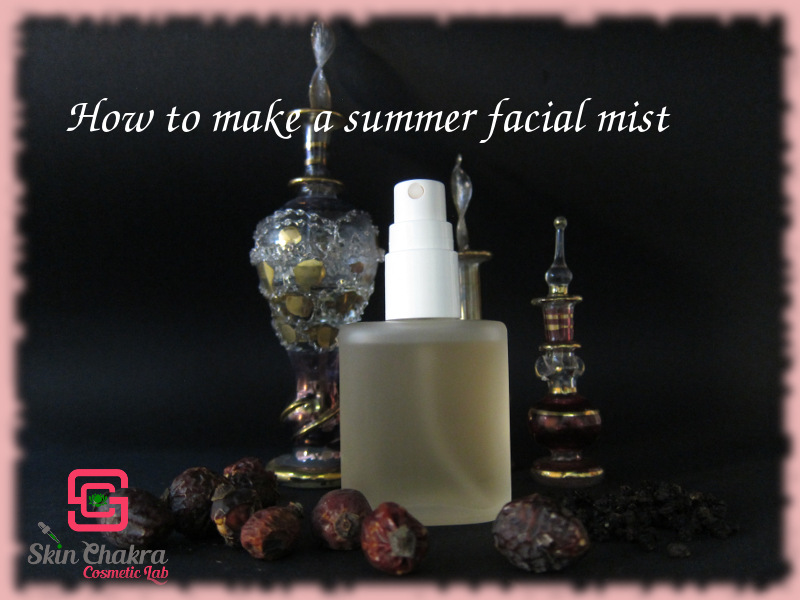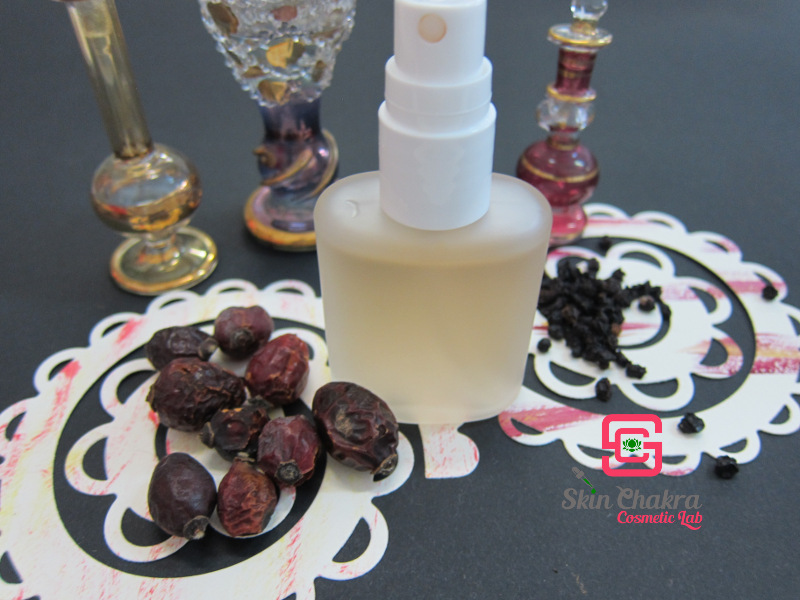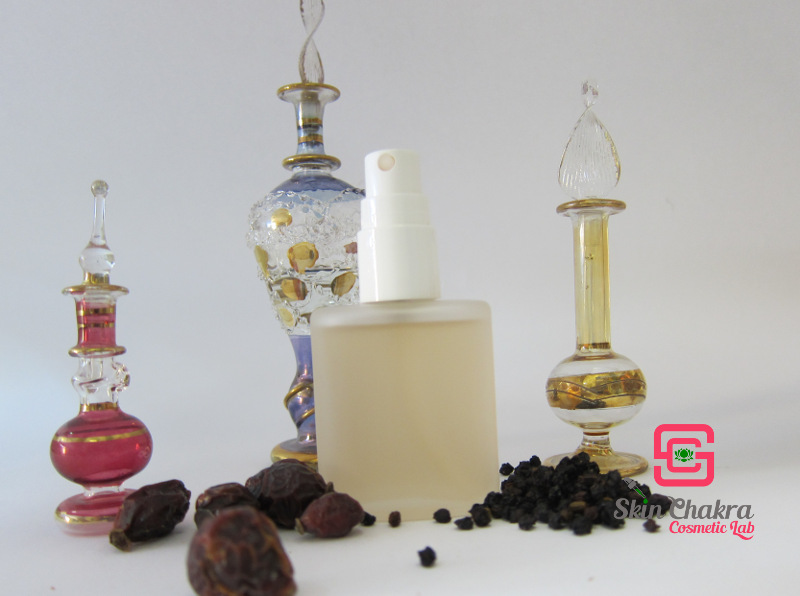
Sonntag, 29. Juli 2018
Summer special facial mist
If you're enjoying (or suffering under) this extremely hot summer, you've probably realized that your skin needs a kind of special care during the day.
"less is more" is the exact definition for a product you can apply several times a day over your face (and even body) to refresh and rehydrate the skin and to avoid any unwanted stickiness or greasiness associated with richer products which are definitely usefull and necessary but probably not the best choice for these days.
The facial mist I'm sharing with you is a kind of very light facial toner. With as little active ingredients as possible. I've completely avoided any essential oils and let the hydrosols impart to a divine scent. I have added some moisturizers to protect the skin from dehydration and that's it. Try it for yourself.
This mister could be a handy-dandy to-go bottle in your purse or your gym-bag which you can apply as often as you desire without any concern about the overdosage of essential oils and any tackiness.
As the extract I used a very low dosage of a highly concentrated extract we've prepared in our own lab:
This is a hydroglyceric extract of elderberry and rosehip. Feel free to swap this with your desired extracts but keep the extract concentration low (to avoid heaviness and tackiness).
The most important part of the formulation is preserving. For this formulation you need watersoluble preservatives. We've preserved the formulation with a blend of a natural chelator (this isn't a preservative but a preservative booster), preservative 1388 eco and versatile BL. We use this blend since years for preserving toners, micellar waters and splashes.
Like many other "natural preservatives", the efficacy of this preservative blend depends on the pH. You need a rather narrow pH range when working with natural preservatives. If the pH is higher than this range, your preservative would be partially to totally deactivated. If the pH is lower than this range, your preservative will sediment and not only be deactivated, it would cause physical instability in the product as well.
Read our previous blog posts about natural preservatives and pH measurement before you proceed:
How to protect your "natural" preservatives from deactivation
How to adjust the pH of your cosmetic products
What you need to know about pH measurement
As always, you need to test the efficacy of your preservative system via challenge and TVC tests. The choice and dosage of preservative depends on the nature and quality of your ingredients and the packaging of the finished product.

Let's jump to the formulation and procedure.
Formulation:
| Phase A | |
| Neroli hydrosol | to 100,0% |
| Helichrysum hydrosol | 25,0% |
| Meadowsweet hydrosol | 25,0% |
| Sodium PCA | 2,5% |
| Sodium lactate | 2,0% |
| Vegeluron | 1,5% |
| Algae extract | 1,0% |
| natural chelator PA3 | 0,1% |
| Phase B | |
| Aloe leaf extract powder | 1,0% |
| Hyaluron high molecular weight | 0,1% |
| Phase C | |
| Hydroglyceric extract of elderberry and rosehip | 1,0% |
| preservative 1388 eco | 3,0% |
| versatile BL | 0,5% |
| Arginine or lactic acid | to adjust the pH |
Procedure:
1- Blend phase A in a beaker at room temperature.
2- Blend phase B in a small beaker. Disperse phase B in phase A. An overhead stirrer or a magnetic stirrer helps a lot but is not necessary. When adding hyaluron to water, you need to add it little by little and (preferrably) in a vortex to avoid clumping.
3- When phase B is completely dispersed, you need to add the extract. Since our extract has a lovely red colour which is pH sensitive, we have measured the pH of the blend before adding the extract. It was around 5 which was perfect for our extract.
Read our blog post about the pH dependence of plant based colours and plant extracts:
What happened to that beautiful colour?
4- Measure the pH again after adding extract. In our case it didn't change.
5- This pH is a just a bit too low for our preservative blend . We added Arginine to increase the pH before adding the preservatives. Be careful: too much arginine and the pH would jump high and the beautiful colour of the extract will turn to an ugly muddy colour. (has anybody ever claimed working with natural ingredients is easy?)
We increased the pH to 5,2 and then added the preservatives. Measured again the pH after adding the rpeservatives and it was perfectly in our range between 5,3-5,5.
6- Take your stability and micro kit samples and fill the rest in a suitable bottle.

Enjoy the refreshing skin feel and the divine scent as often as you desire.
BeHappy and have fun

